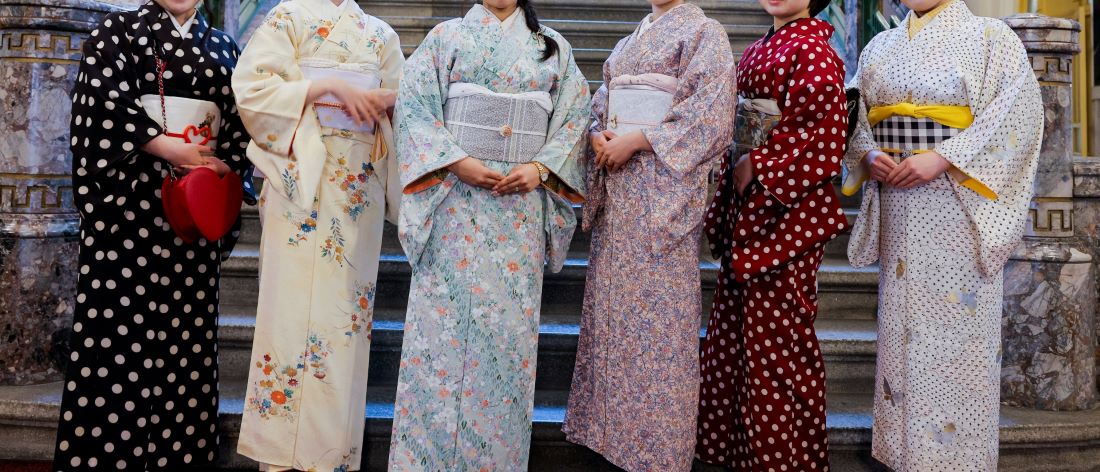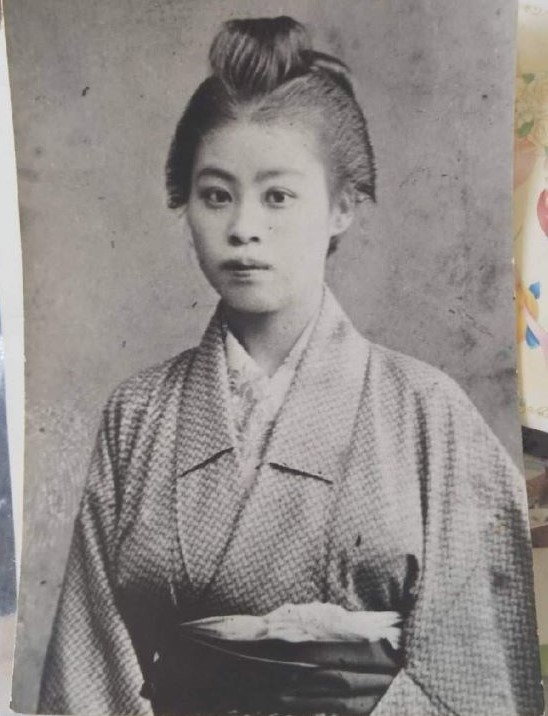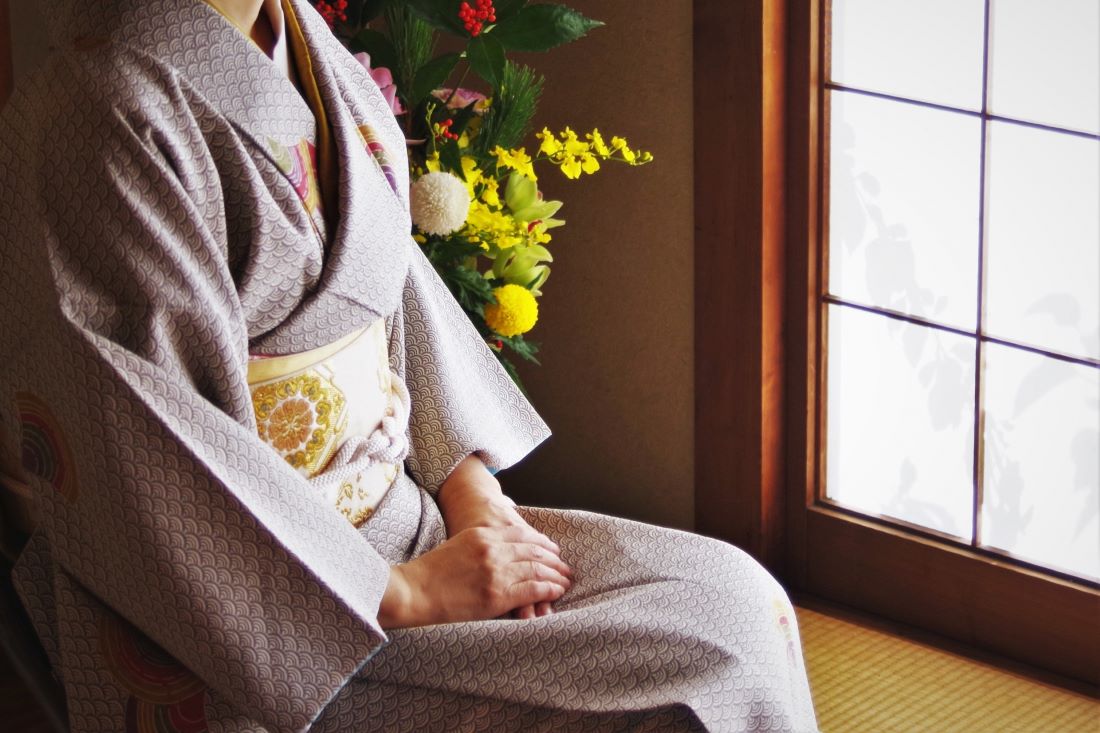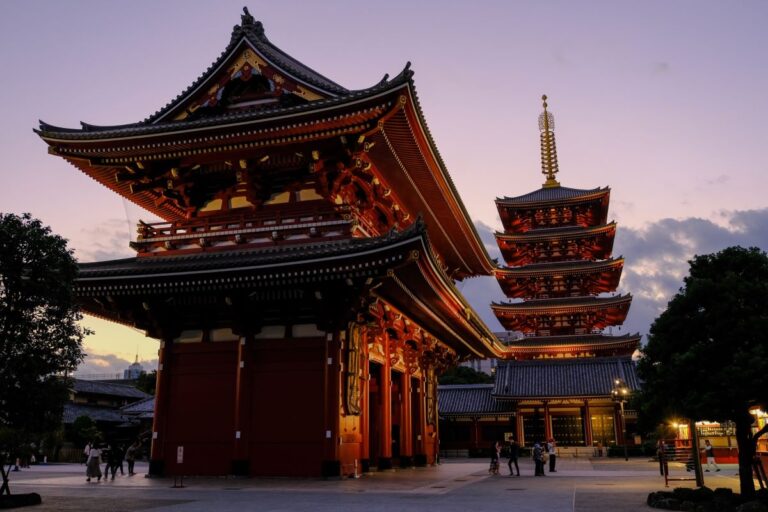Te kimono is a traditional Japanese garment that has been worn for centuries. It is a T-shaped robe that has long, wide sleeves and is often made of silk. The word “kimono” literally means “thing to wear” in Japanese, and it is considered to be the national dress of Japan.

It was originally worn as a daily garment, but over time it became associated with formal occasions such as weddings, tea ceremonies, and other special events. Kimono is also a symbol of Japanese craftsmanship and artistry, as each garment is handmade and often adorned with intricate embroidery, dyeing, and weaving techniques.
Today, the kimono is still worn by some Japanese people for special occasions, but it has also become a popular fashion item around the world. Many designers have incorporated kimono-inspired elements into their collections, and there are even modern variations of the garment that are more accessible and easier to wear.
Despite its evolution, the kimono remains an important part of Japanese culture and history, and it continues to inspire and fascinate people around the world.
History of Kimono

Origins
The word “kimono” means “thing to wear” in Japanese. The traditional garment has been worn in Japan for centuries and has a rich history. The origins of the kimono can be traced back to the Heian period (794-1185), where it was worn as an undergarment by aristocrats. It was made from silk and was adorned with intricate embroidery and designs.
During the Edo period (1603-1868), the kimono became more accessible to the general population. The garment was made from cotton and was more affordable. The designs became simpler, and the kimono became a symbol of the Japanese culture and identity.
Evolution
During the Meiji period (1868-1912), Japan opened up to the world, and Western influences began to impact traditional garments. The kimono was modified to be more practical and comfortable to wear, and new materials such as wool and synthetic fibers were introduced.
After World War II, the kimono faced a decline in popularity as Western clothing became more fashionable. However, in recent years, there has been a resurgence of interest in traditional garments, and designers have been incorporating it into modern fashion.
Significance
The kimono is more than just a piece of clothing. It is a symbol of Japanese culture and identity. The designs and patterns on the kimono reflect the seasons and the natural world. The way the kimono is worn also conveys meaning, with different styles and colors being worn for different occasions.
Today, the kimono is still worn for special occasions such as weddings, tea ceremonies, and festivals. It is also a popular souvenir for tourists visiting Japan.
Overall, the kimono is a treasured part of Japanese culture and history, and its significance continues to be celebrated and appreciated.
Types of Kimono

Furisode
Furisode is a type of kimono that is worn by unmarried women. It is characterized by its long sleeves that can reach up to 114 cm in length. Furisode is usually worn during formal events such as weddings, tea ceremonies, and coming-of-age ceremonies.
Tomesode
Tomesode is a type of kimono that is worn by married women. It is characterized by its shorter sleeves and the intricate designs that are usually found at the hem, shoulders, and back of the kimono. Tomesode is usually worn during formal events such as weddings and receptions.
Iromuji
Iromuji is a type of kimono that is usually worn for formal events. It is characterized by its solid color and lack of patterns. Iromuji is usually worn by both married and unmarried women.
Houmongi
Houmongi is a type of kimono that is usually worn for semi-formal events. It is characterized by its flowing patterns that usually cover the entire kimono. Houmongi is usually worn by both married and unmarried women.
Tsukesage
Tsukesage is a type of kimono that is usually worn for semi-formal events. It is characterized by its intricate designs that are usually found on the upper part of the kimono. Tsukesage is usually worn by both married and unmarried women.
Komon
Komon is a type of kimono that is usually worn for casual events. It is characterized by its small repeating patterns that cover the entire kimono. Komon is usually worn by both married and unmarried women.
Yukata
Yukata is a type of kimono that is usually worn during the summer months. It is characterized by its light and airy fabric and simple designs. Yukata is usually worn by both men and women.
Uchikake
Uchikake is a type of kimono that is usually worn by brides during their wedding ceremony. It is characterized by its long and flowing train and intricate designs that usually cover the entire kimono.
Kimono Accessories

Obi
The obi is a sash worn around the waist of a kimono, and it is one of the most important kimono accessories. It is usually made of silk and can be as wide as 30cm and 4m long. The obi can be tied in various ways, and the style of the knot depends on the occasion, the wearer’s age, and the formality of the kimono.
There are many types of obi, including maru obi, fukuro obi, and nagoya obi. Maru obi is the most formal type of obi, and it is made of a single piece of fabric with a pattern that runs throughout the length of the obi. Fukuro obi is also formal, but it has a plain back and a patterned front. Nagoya obi is the most casual type of obi, and it has a pre-tied knot and a plain section that wraps around the waist.
Geta
Geta are traditional Japanese sandals that are worn with a kimono. They have a wooden base and two straps that go over the foot. The height of the geta varies, and it depends on the formality of the occasion. Geta are usually worn with tabi, which are split-toe socks.
There are many types of geta, including tatami geta, which are worn indoors, and waraji geta, which are made of straw and worn by farmers and laborers.
Tabi
Tabi are split-toe socks that are worn with geta and other traditional Japanese footwear. They are usually made of cotton or silk, and they come in a variety of colors and patterns. Tabi are an essential part of a kimono outfit, and they are often coordinated with the color of the kimono.
Kanzashi
Kanzashi are hair ornaments that are worn by women with a kimono. They come in a variety of shapes and sizes, and they are usually made of metal, wood, or silk. Kanzashi can be used to create a variety of hairstyles, and they are often coordinated with the color and pattern of the kimono.
Some common types of kanzashi include tsumami kanzashi, which are made of folded silk, and hana kanzashi, which are made of silk flowers.
Kimono in Modern Times
Fashion Industry
Kimono has become a popular fashion item in recent years. Many fashion designers have incorporated the kimono into their collections, bringing new life to this traditional garment. The kimono’s simple yet elegant design has inspired many modern fashion trends, such as oversized sleeves and loose-fitting silhouettes.
The popularity of the kimono has also led to the creation of modern versions of the garment, such as the “komon” and “yukata.” These variations are made with lighter fabrics and are often worn as summer casual wear.
Pop Culture
The kimono has also become a staple in pop culture, with many celebrities and influencers sporting the garment on social media and at events. The kimono’s versatility and timeless design have made it a popular choice for those looking to make a statement with their fashion choices.
In addition, the kimono has been featured in many movies and TV shows, further cementing its place in popular culture. One notable example is the character of Memoirs of a Geisha, where the kimono plays a central role in the story.
Cultural Appropriation
While the kimono’s popularity has brought attention to Japanese culture, it has also led to concerns about cultural appropriation. Many people feel that non-Japanese individuals wearing the kimono is disrespectful and reduces a traditional garment to a mere fashion statement.
However, others argue that the kimono’s popularity among non-Japanese individuals can be seen as a form of cultural appreciation, as long as it is done respectfully and with an understanding of the garment’s cultural significance.
Ultimately, the debate surrounding the kimono’s place in modern times highlights the importance of cultural sensitivity and understanding.
The Sum Up

While the kimono has evolved over time, its essence remains the same. It represents the beauty and grace of Japanese culture and serves as a symbol of tradition and heritage. Whether you are wearing a kimono for a special occasion or incorporating it into your everyday wardrobe, it is a timeless piece that will never go out of style.




